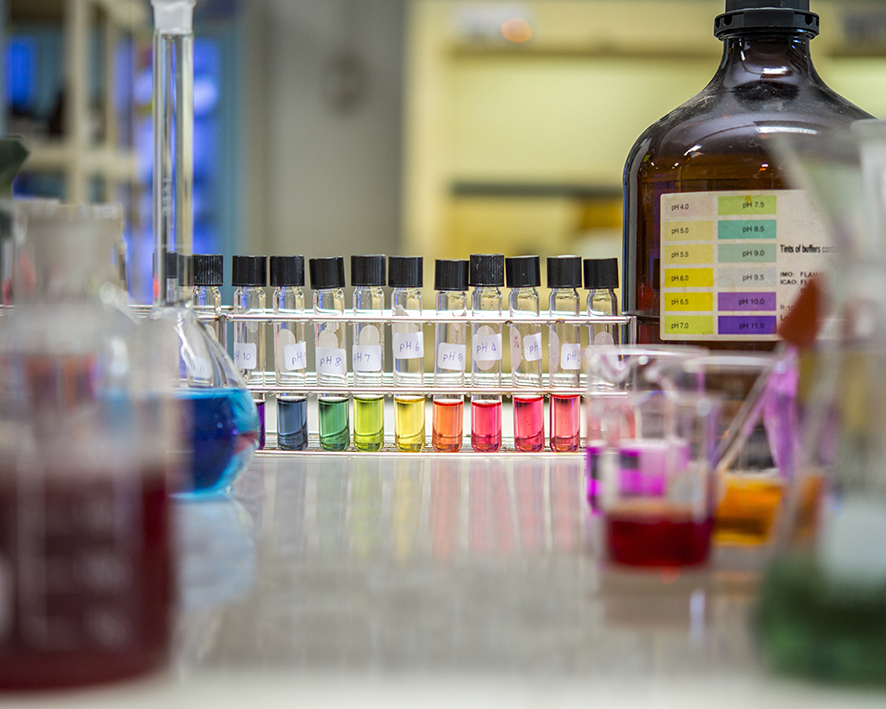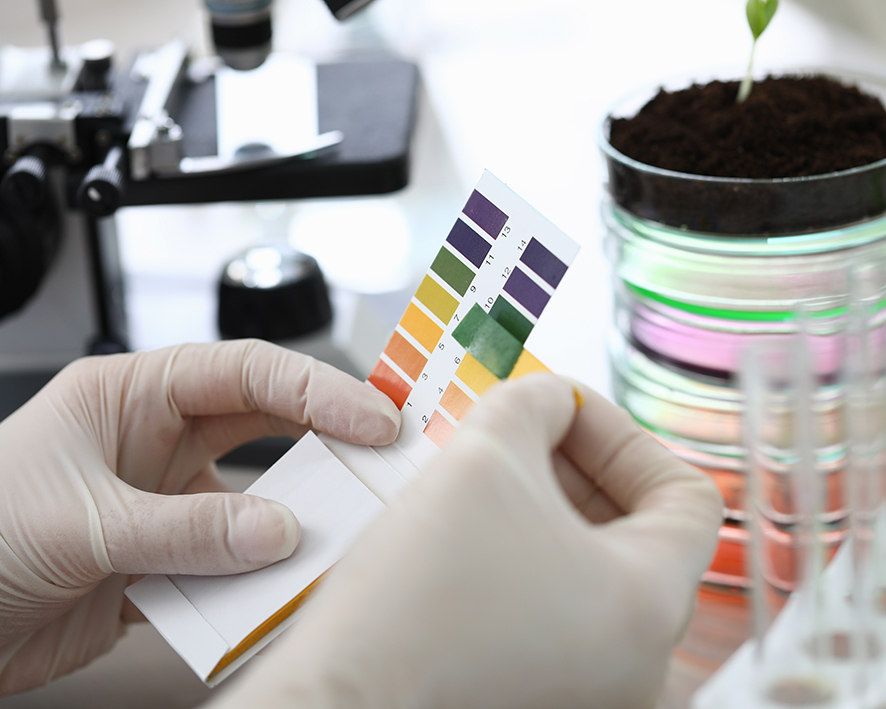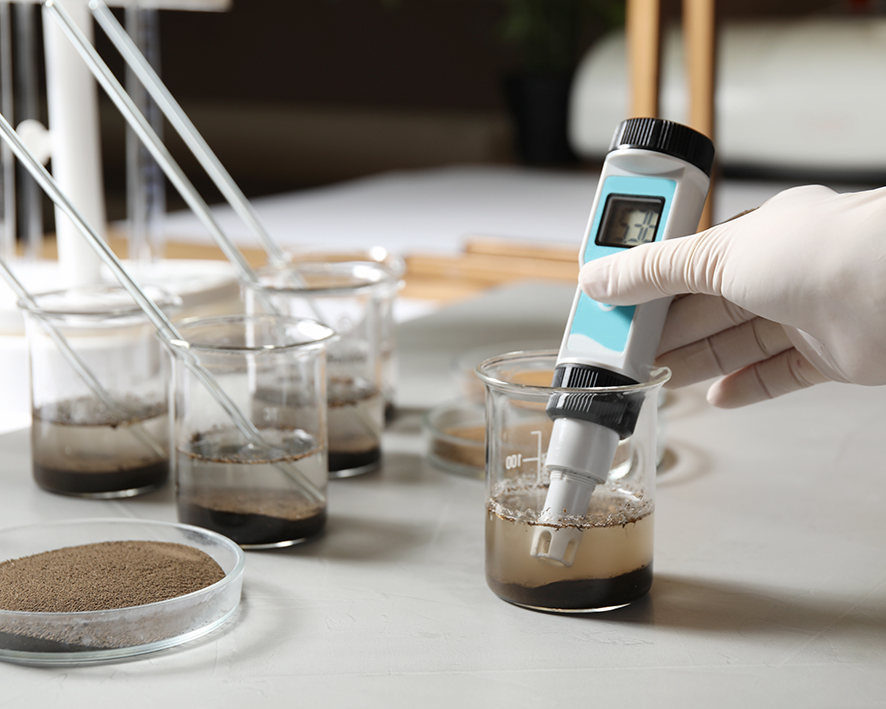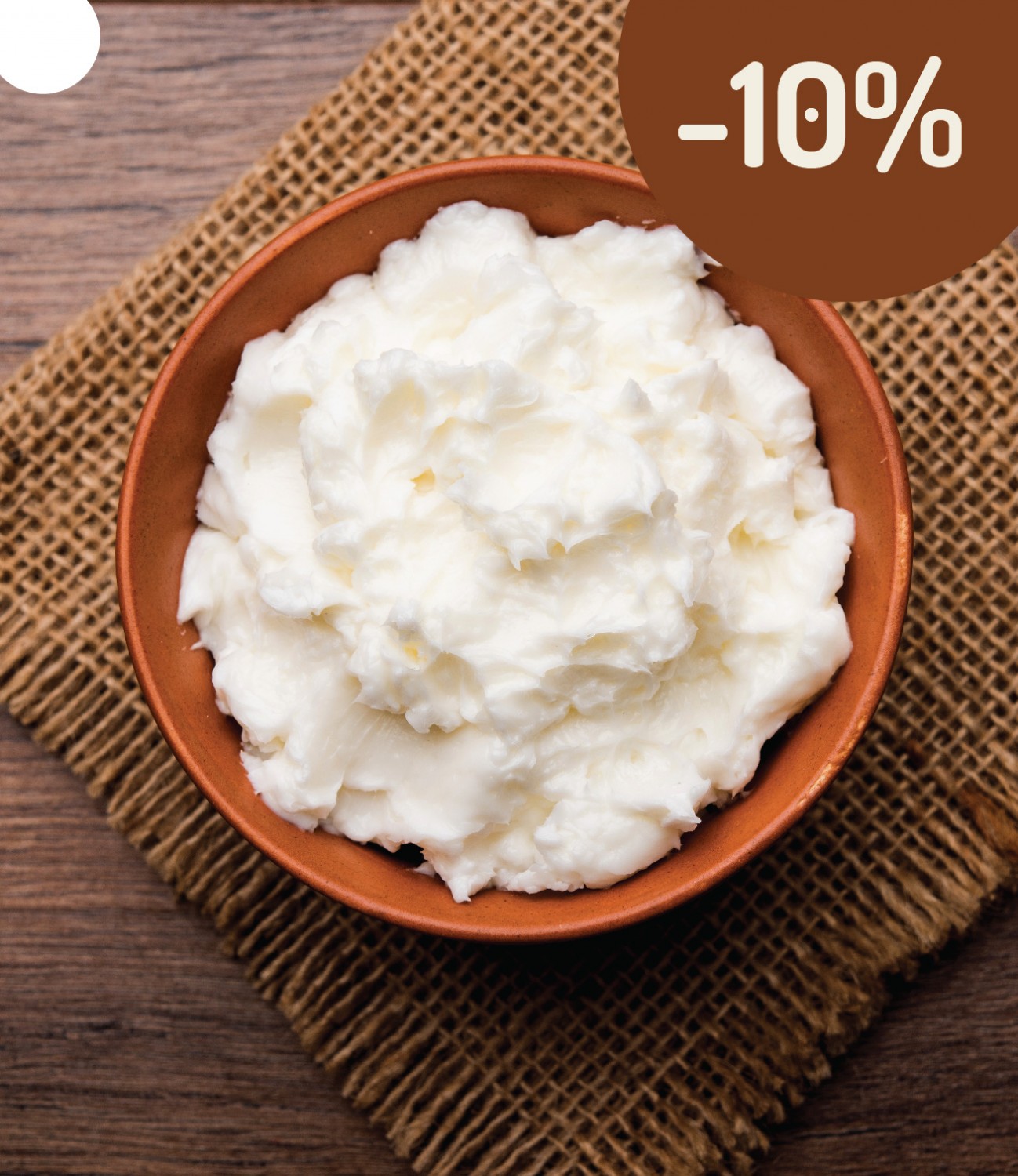Product pH measurement
Measuring the pH of a product is very important in some natural cosmetic processes. Come find out with us how to do it.
You must have come across various terms related to pH in cosmetic products. Whether the product in question had a pH close to the skin or was presented as pH neutral. But what does pH actually mean and what are the procedures for measuring the pH of products? Why is it actually important? That's what you'll find out in the following article.

pH
Simply put, the pH value tells us how acidic or basic a product is.
You've probably already come across the term acidity; acetic or citric acid is commonly used in cooking
and their acidic taste is quickly recognisable. The term alkalinity or alkalinity is the opposite of acidity. Alkaline substances,
commonly encountered are, for example, baking soda or ordinary solid soap.
In the middle between alkaline and acidic substances are neutral ones, i.e. those that have a neutral pH. This is the case, for example, with distilled water (ordinary tap water contains dissolved minerals or chlorine that affect its pH).
it is best to think of pH as a scale from 0 to 14
(i.e. substances with a pH of 0 are extremely acidic and corrosive and those with a pH close to 7 are minimally acidic). a pH of 7.0 represents a neutral pH and from pH 7 to 14 we have increasing alkalinity (substances with a pH of 14 are extremely alkaline and corrosive).
Thus, for a simplified idea of pH, it is enough to know that this value tells us the acidity or alkalinity of the product. However, for those who would like to know more, pH actually expresses how large the negative decadic logarithm of the activity (or concentration) of H+ ions (those that split off acids in solution) is. At pH 1 their concentration is 10-1 mol/l, at pH 7 it is 10-7 mol/l, showing that acidity is decreasing. This is something you don't have to worry about once you're making cosmetics at home. However, if you want to produce on a larger scale or are more advanced in formulating cosmetic products, a more detailed knowledge of pH will certainly come in handy.
Since pH is related to the amount of H+ ions in a solution, it is not possible to measure the pH of products that have no water. These are, for example, pure oil-based skin serums, balms or body butters.
WHY IS IT IMPORTANT TO MEASURE PRODUCT pH?
pH AND SAFETY RISKS
Now that we know what pH is, you're probably wondering what this value is used for. pH has a wide range of applications
in cosmetics, not only because of the advertising slogans on the products, but above all because of safety.
If you were to apply a product with too high or too low a pH to your skin, you would get burned,
which, depending on the area of the damaged skin, is a serious injury. If you haven't experienced scalding before,
it can be compared to a burn to some extent - the skin is very red and burns, with more serious burns appearing blisters and scarring may occur (of course, this depends very much on the type of chemical, a burn may not always manifest itself in this way).
Thephysiological pH of the skin is between 4.5 and 5.5. Therefore, if you have sensitive skin it is a good idea to target your products within this range. When making at home, you should avoid products with a lower pH to avoid unnecessarily damaging your skin. There are also products that are slightly more acidic with a pH of around 4, but these are only suitable for occasional application (like chemical peels) and are often only available in beauty salons where they are applied by professionals. It follows that pH measurement plays an important role in the manufacture of home cosmetics.
In the same way, overly alkaline products do not suit the skin. The ideal is to keep the pH of the product to 7.5 during manufacture, or 9 if it is a solid or liquid soap made from hydroxide.
eFFECTIVENESS OF CONSERVATIVES AT VARIOUS pH VALUES
Another reason why it is useful to measure the pH of products is the choice of the appropriate preservative. For each preservative, you will find an indication from the manufacturer as to what pH range the preservative is effective.
If your product does not meet this range, the preservative will not work in it or its effectiveness will be reduced, which also has a significant impact on the stability of your products and their shelf life. Since almost all natural preservatives have a limited efficacy tied to the resulting pH of yourof your product, if you want to formulate stable products, make sure you know this value for your preservative and that the resulting pH of the product matches it.
An example of a preservative is Cosgard, which is effective at pH 2-7, with its greatest effectiveness below pH 5.5. Therefore, this preservative is suitable for more acidic products, such as various vitamin serums or products
with AHA acids. On the other hand, Euxyl PE 9010 is effective up to pH 12, making it a good choice for beginners in cosmetic manufacturing, but it is a synthetic preservative.
PH STABILITY IN PRODUCT
The pH value also influences some of the properties of the product, such as its colour, viscosity (in simple terms, density) or other physical and chemical properties that should not change during product storage. At the same time, abrupt changes in the pH of a product can also be a signal that significant microbial contamination has occurred. Therefore, a stable pH value of the product during storage is a prerequisite for good stability and safety of the product.
eFFECTIVENESS OF ACTIVE SUBSTANCES IN RELATION TO pH
Some active ingredients added to cosmetics are only effective at certain pH values.
For example, ascorbic acid (vitamin C) will be ineffective in products that are too alkaline because it will be neutralised. At the same time, a pure, more concentrated aqueous solution of vitamin C has a relatively low pH unsuitable for for the skin, so again it is advisable to raise this pH slightly by adding a base to the physiological pH of the skin.
Retinol (a form of vitamin A), on the other hand, is most effective at pH 5.5 to 6. Alpha hydroxy acids (AHA acids) such as lactic acid or glycolic acid, which are often used for chemical peels, are also quite strong for organic acids. Their 10% solutions would be too acidic and damage the skin too much, so when making cosmetics with them, it is necessary to measure the pH and possibly adjust it to physiological (admittedly, this will neutralize some of the acid, which may seem uneconomicalon the other hand, if you only wanted to add a small amount of acid just enough to achieve a pH of 4.5, you would not be able to weigh that amount on a conventional balance - it is too small because it is a strong acid).
MEASURING THE pH OF THE PRODUCT - HOW TO DO IT?
There are several methods for measuring the pH of a product, from the less accurate to the most accurate. We will introduce you to a few of them. However, it is important to note that pH measurement is always done in solution,
that is homogeneous (i.e. well mixed and thus has the same composition everywhere and does not have bits of substances floating around). Therefore, if you want to measure the pH of a thicker serum or lotion, you need to make a 10% solution of it in distilled water (e.g. 5 g of product and 45 g of water or 10 g of product and 90 g of water). Be sure to mix the solution thoroughly, otherwise the pH measurement will not be accurate. Dilution in distilled water will have only a negligible effect on the resulting pH.
If you want to speed up the pH measurement, there are also special pH meters calibrated for use in very thick solutions (i.e. creams, serums) without the need for dilution.

LACME PAPERS FOR pH MEASUREMENT
This is the lightest form in which pH measurement can be accomplished. Litmus papers are impregnated with an acid-base indicator, litmus, which changes colour depending on the pH of the solution. These papers
are also sold with an accompanying colour scale, usually from ph 1 to 12 or 14.
MEASURING THE PH OF SOLUTIONS WITH LACTUS PAPERS
Drop a drop of your product solution onto the paper (or you can dip the end of the paper into the solution, but it maythe dye from the paper may also slightly stain your solution) and immediately read off the colour from the scale, as the colour can change quickly. Sometimes you may not be able to decide between two colours on the scale. In this case, you can also reach for the more accurate indicator papers, which have four different pads on them (buyof paper) with an indicator, each of which is coloured differently at a given pH, making it easier for you to read the value on the accompanying scale, as you have up to 4 control points.
The litmus slips are thus an easy and quick way to check the pH of a product. However, it is not a very accurate pH measurement. At the same time, it is important to keep the papers away from moisture, light and heat.

pH METRE
pH meters are electronic devices which, depending on their accuracy, allow pH measurements to two decimal places. They contain an ion-selective glass electrode inside which is sensitive to H+ ions that affect pH.
The results obtained with pH meters are more accurate, but on the other hand they are more difficult to handle and more expensive. pH meters must be calibrated at least once a month by immersion in calibration solutions of the exact pH value (these can be purchased). At the same time, the electrodes in the pH meter must be immersed in the buffer solution during storage and must be rinsed after each use by immersing the pH meter in the container
with distilled water. The electrodes are also susceptible to scratching and deterioration, so never touch or wipe them.
Depending on the type of pH meter you choose, you may also be able to measure pH in samples without diluting them first (but always follow the manufacturer's instructions). IF you want to adjust the pH of your products, pH meters are a must for accurate work.
Measuring the pH of soap
Soap is a specific product that requires a pH measurement, as soap that is too alkaline can easily irritate or damage the skin. For liquid soaps, the procedure for measuring pH is the same as for creams
or other thicker products. If you are measuring the pH of a solid soap, either make a 10% solution of it (as described above) or use litmus or phenolphthalein papers for a quick pH measurement with less precision. Simply place the paper on the wet surface of the soap and read the value from the colour scale.
PH CALCULATION FOR ADVANCED
In this case, it is more of a hobbyist's method, because the greater the number of ingredients in the product that affect its acidity or alkalinity, the more complicated the calculation becomes. For simpler products such as toners
with AHA acids or similar products, however, this method may be suitable for indicative pH determination. Using the calculation, you can know in advance approximately how much base or acid you will need to adjust the pH value.
This way, you do not have to add the pH adjusting solution drop by drop from the beginning, but add a larger amount that is slightly lower than the calculated amount, and then you add it drop by drop, stirring as you go
and continuously measuring the pH. These kinds of calculations are most often based on the Henderson-Hasselbalch equation and the acid dissociation constants.
adjustment of product pH
If you have successfully mastered measuring the pH of your product, but it is too high or low for the product, there are ways to change it. This is a product pH adjustment. This pH adjustment is done before you add an ingredient to the product that requires a certain pH environment, such as a preservative.
Of course, the overall composition of the product must also be taken into account when adjusting the pH. Before changing the pH, make sure,
that you do not have other ingredients in the product that may not be effective at the new pH. For example, if you want to use a preservative in an acidic environment, but you are making a facial cleansing foam containing liquid soap, which is naturally alkaline, and thus increases the overall pH of the product. In that case, you need to change the preservative because the soap will always be alkaline (if it had a pH other than alkaline, it would no longer be soap).
In case of such incompatibility of ingredients, you have to modify the recipe and often replace the raw material with another one.
Lowering the pH of the PRODUCT
If you want to make your product more acidic, you will lower its pH. You achieve a decrease in pH by using acid solutions. Citric acid, which is inexpensive, is most commonly used for this purpose,
readily available and safe. Alternatively, lactic acid, which is also safe when diluted but can cause scalding when concentrated. Its advantage is that you are already working straight with a solution that you can just dilute, you don't need to dissolve it in distilled water, unlike crystalline citric acid.
To use any of the acids mentioned, you first need to prepare a 10% solution of them
in distilled water. This can then be added drop by drop to your product with thorough mixing. Be sure to add really small amounts and stir the product thoroughly, as sometimes even a few drops of acid can cause a significant drop in pH.
Each time, take a small amount of product and make a 10% solution to measure the pH using a pH meter as mentioned above. Litmus slips are not very suitable for this purpose because of their lower accuracy. However, it is also possible to find indicator slips which, for example, only work in the pH range 4-7, so they have a scale with smaller parts, but many times even this will not be accurate enough.
INCREASING THE pH OF THE PRODUCT
The opposite of lowering acidity is raising alkalinity, or in other words it is raising the pH of the product using alkalis. Most commonly, a 10 % sodium hydroxide solution is used for this purpose. This is a corrosive substance, so always wear safety goggles, gloves and ideally a respirator or work in a well-ventilated area when preparing the solution (the vapours are also toxic). Remember to always pour the HYDROXIDE into WATER and NOT INTO WATER!!! Read more about working safely with hydroxide in the product description.
Sodium Hydroxide is a solid substance sold in granular form. When they are dissolved in water, a large amount of heat is released, so always use plastic or stainless steel containers to prepare the solution. The heat generated could cause glass to break and sodium hydroxide is corrosive to other common kitchen metal materials (except stainless steel). The exception for glass is chemical glass (most commonly borosilicate),
beakers and other laboratory utensils are made from glass, which should be able to withstand heat stress (but always check that they are certified).
Add hydroxide and then measure pH in the same way as for acidification,
until the desired pH is reached. An alternative to sodium hydroxide may be sodium bicarbonate (baking soda).
Information source: https://skinchakra.eu/blog/archives/497-How-to-adjust-the-pH-of-your-cosmetic-products.html
PH MEASUREMENT AND CONCLUSION
Measuring pH with the help of this article doesn't have to be such a science at all. Choose the method that suits you best and get on with it. It only takes a moment and you'll have a result right away.
Let us know here or on Facebook if this article has helped you understand the topic better
about pH and its measurement. We'll be looking forward to it.
Have a nice, creative day.
Until the saponification, my friends.




